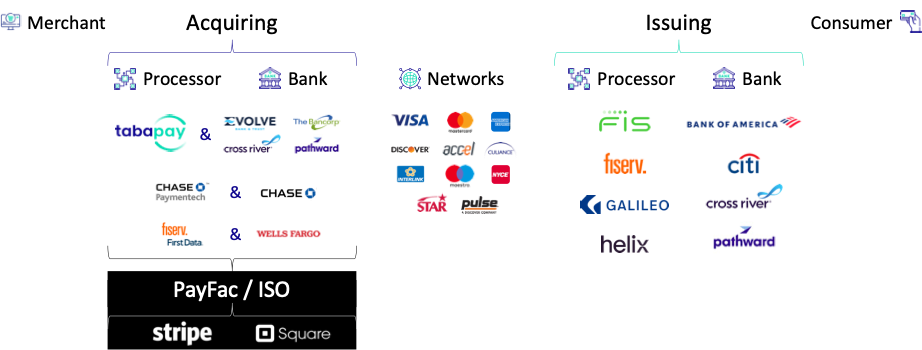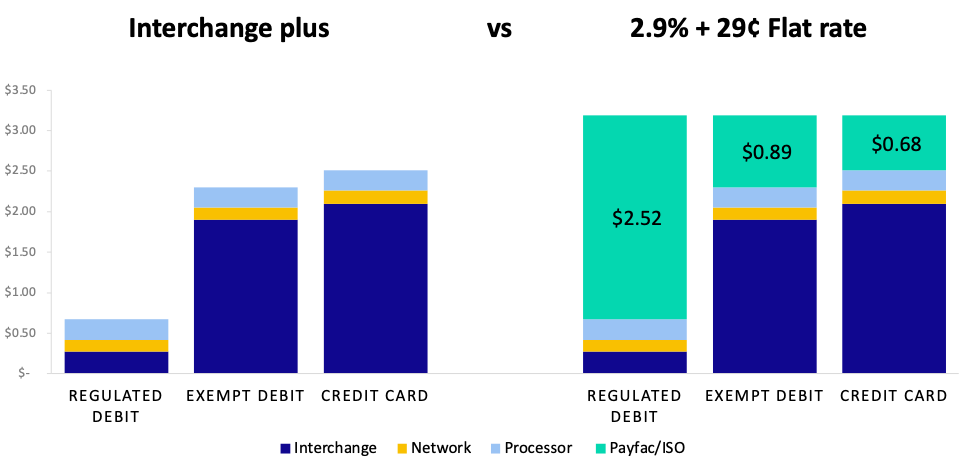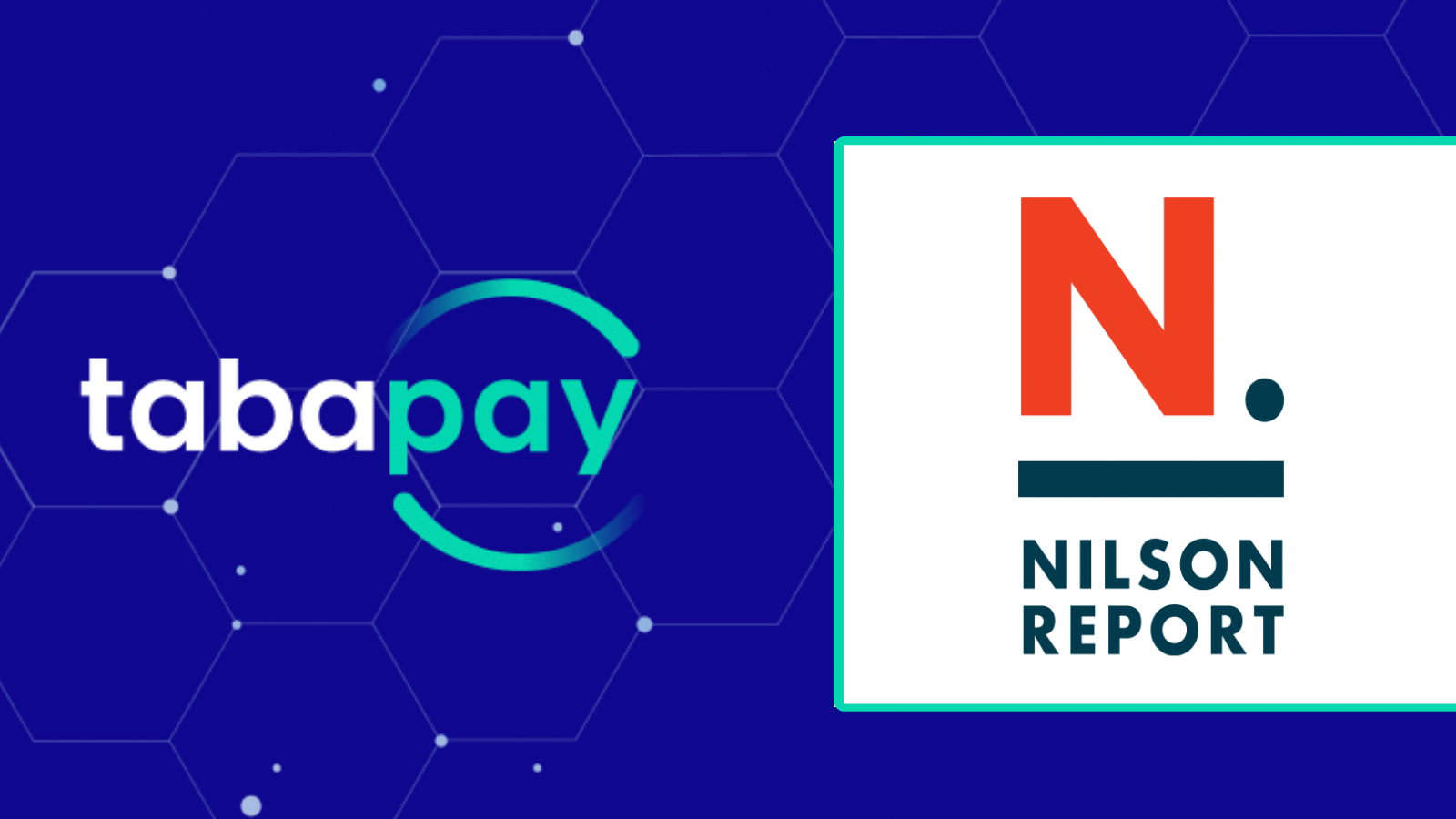The tradeoffs of interchange-plus and flat-rate pricing for card acceptance
Accepting cards for any consumer-facing business is essential for running a successful neobank or fintech. However, selecting an acquirer and deciphering the best pricing model can be difficult and depends on several variables. There are many different pricing models, rates, and acquirer fees within interchange-plus, flat-rate, all-in, subscription, and other models.
In this brief acquiring model explainer, we will discuss the core differences between the two dominant models for fintech: interchange-plus (cost-plus) and flat-rate (all-in), the tradeoffs between the two, and how to turn acquiring from a cost center to a strategic advantage for your business.

Before we go full payments nerd on the tradeoffs of each model, let’s start with the payment value chain:
- A merchant or fintech client
- An acquiring processor transmits messages for transactions and
- An acquiring bank to move the funds
- PayFacs or ISOs are payment facilitators that use an acquiring processor and acquiring bank to conduct transactions and often have a value-add service like low/no-code or other industry-specific functionality
- Networks are front-of-card brands (Visa, Mastercard, Amex, and Discover) and back-of-card PINless debit networks
- Most issuers use an issuer processor to manage their core and card issuance
- The cycle begins and ends with the consumer
What drives the cost of acceptance?
To accept card payments, merchants must pay interchange fees to the card’s issuing bank (e.g. BoA), assessment fees to the card’s payment network (e.g. Visa), and processing fees to the processor (e.g. TabaPay).
Interchange and network assessment fees are determined by the card networks and vary based on these and other factors:
Type of card:
- Debit card, prepaid card, business debit card, credit card, business credit card, and premium credit card programs (yes, there’s a big difference, more in the next section)
Card network:
- Visa, Mastercard, Discover, AMEX, and regional debit networks (Accel, CuAliance, Interlink, Maestro, Nyce, Star, Pulse)
Type of payment:
- Card present including swiping, tapping, dipping, and tokenization, among others
- Card-not-present including card on file, manual keying in, and tokenization, among others )
Transaction type:
- Payment/Purchase (account funding, debt repayment, subscriptions, services, digital goods, etc.)
- Payout/Disbursement, cash to card, credit card payout, and others
Merchant Category Code (MCC):
- The category for a transaction like debt repayment, account funding, small ticket, and so on along with data requirements (level 2 & 3 can reduce interchange with more data on the transaction), and if the transaction is considered high risk
Interchange fees can range from 22¢ +5bps for debit to 10¢ + 2.7% for credit, while network fees can vary from 4¢ + 0.165% based on the factors listed above, but they are fixed costs established by the networks and are the cost of card acceptance. One aspect that a business can control is how much you pay for acquiring processing.
You can find all interchange and network fees for TabaPay transactions here and learn more about Visa’s Fees and Mastercard’s Rates
The tradeoffs for acquirer models

With interchange plus, the acquirer processor passes through the interchange and network fees and adds a markup. This model is popular because it usually is the lowest cost and has a transparent fee structure. For every transaction, you will know how much the card network and your processor are charging.
The tradeoff, On the other hand, fees can be more difficult to understand and transaction costs can vary widely based on the key variables above.
In a flat rate or “all-in” model (e.g. 2.9% + .30¢), merchants pay a fixed percentage of the transaction amount and a per-transaction fee. This model is much simpler to understand and faster to accept payments, but it is a black box of cost. The interchange and network fees for a premium rewards credit card are much higher than a regulated debit card and when both transactions cost the same, the Payfac/ISO pockets the difference, which is $2.52 in this $100 purchase. This adds up quickly in fintech where most purchases are with regulated debit cards.
What are the key differences between interchange-plus and flat-rate pricing:
| Interchange-plus | Flat-rate (2.9% + .30¢) | |
| Structure | Merchants are charged interchange and network fees plus an acquiring fee. | Merchants are charged a fixed fee per transaction. |
| Transaction Costs | Less expensive but more variable | More expensive but less variable |
| Simplicity | More complicated | Usually simpler |
| Transparency | Transparency for interchange and fees (can depend on processor) | No cost transparency |
| Merchant Volume | Higher monthly volumes (thousands/month) | Lower monthly volumes (handful to thousands/month) |
| Value-Add Services | Varies based on processor. Often fraud and transaction-based services | No/low-code or services tailored towards a specific vertical (lending, marketplaces and so on ) |
TabaPay’s 2¢
TabaPay primarily uses an interchange-plus or cost-plus model, which is differentiated by charging a fixed fee per transaction. Most other acquirers charge a per transaction fee (15-25¢) plus a percentage of the transaction amount (0.29-0.75%) source.
TabaPay also offers a flat rate model for specific use cases such as digital tipping and Account Fund Transfers (AFTs), among other use cases. Some of the benefits customers see from an “all-in” pricing model are certainty of cost without a percentage, such as 40¢ per transaction. This model benefits specific use cases, businesses with lower ticket sizes, and enables processors to provide cost certainty to merchants sensitive to the variable cost of payments.
Moving from a cost of doing business to a strategic advantage
Small businesses usually start with a flat-rate model since it is often the easiest way to accept payments quickly and contracts are structured for lower volumes. Simplicity, speed to acceptance, and integrated hardware make it easy for a fintech or a taco truck to accept payments, but it comes at a cost with typical pricing of 2.9% plus 30¢ per transaction or more.
As your business grows and originations cross into thousands of transactions, it makes sense to move to a cost-plus model. Merchants can gain from the cost reductions that come from preferential pricing, intelligent routing, and lower processing costs. Cost-plus pricing can shift payments from what was once considered a cost of doing business to a strategic cost savings advantage. Partners like TabaPay can help these merchants to optimize their payments program when they have achieved scale.
Choosing an acquiring model that’s right for your business depends on several variables and each model has tradeoffs, as we discussed above. However, with the right partners, infrastructure, and team you can leverage acquiring to be a strategic advantage, driving more to your bottom line.
Want to explore cost-savings for card acceptance with TabaPay? Get in touch here






